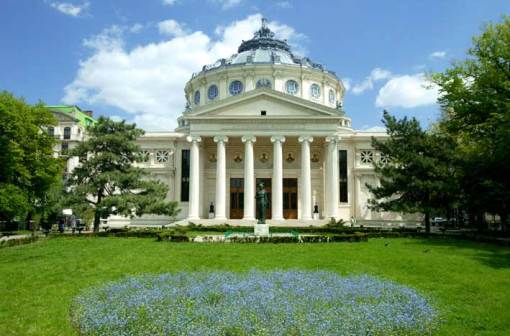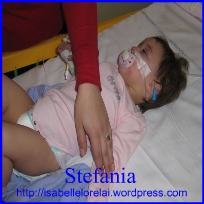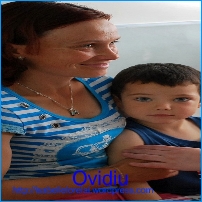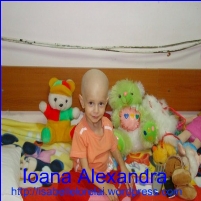East Germany, October 1989. The newly elected leader Egon Krenz holds his first speech, promising continuity and some changes. The party’s role will remain the same, but he promises to open for a dialogue with the opposition. The next day he meets with the representatives of the Church. The Dresden Synod of the Evangelic Church questions the leading role of the party and asks the party leaders to apologize for the previous days’ brutalities. On October 23rd, the number of demonstrators reaches 300.000. Starting November 1st, Honecker’s decision to cancel trips in the eastern european countries is revoked. The exodus grows once again. On November 1st, Egon Krenz goes to Moscow, where he states that he doesn’t regret the past. He says that Poland and Hungary are no models for him. On November 2nd, on return from Moscow, Krenz tries to comply more with the protesters’ wishes, but it is too late: concessions that would have been favourably received one week ago are not convenient for the demonstrators anymore. The crowds have become more and more radical starting October 9th. The demonstrations are practically continuous. In East Berlin, November 4th is a peak, a strong signal for the power. Nothing can stop the people to express their discontent anymore, to fill the boulevards and squares in growing numbers. They are now over one million! The power is disintegrating. On November 7th, prime minister Willy Stoph resigns. He had been in office for 25 years, since 1964. Four days later, all members of the Political Bureau resign. Willy Stoph is replaced by Hans Modrow, a reformist economist, Dresden’s political chief and a favorite of Gorbaciov. But the demonstrations go on. In Berlin, one million people are marching. The police refrains from intervening. The protesters ask Egon Krenz to step down. Krenz phones Kremlin and talks to Gorbaciov. “What should I do?” he asks. The soviet leader advises him to open the borders, to avoid an uprising at a huge scale. Bu November 9th, 300.000 people have crossed the border. In the afternoon of November 8th, East Berlin’s political chief, Gunther Schabowski, announces that starting next morning the Eastern Germans may leave the country through whatever border they choose.
At midnight, the Berlin Wall opens. It is a symbolic fall, similar to that of the Bastille. An era is ending. The police, the frontier guards watch, disconcerted, not knowing what to do. Then they fraternize with the crowds. “Open the gate!” is the overwhelming shouting of the people. “Tor auf, tor auf!” The people from both sides of Berlin, tens of thousands of people, storm the wall. They sing, they chant, they dance. All of Berlin, East and West together, is on the streets. It is a magical night. A dark period of history is at its end. The Berlin Wall has been one of the strongest symbols of the dividing of Europe. Thousands of people have tried to get through it since it was constructed. Official figures say 252 people were killed by the frontier guards. In 1991, statistics speak of other 216 dead. The real number of those who have tried to cross the wall between 1961 and 1989 is unknown. And now, after 28 years and 91 days, the wall falls. The people of East Berlin rush in the Western Berlin. 2 million visitors in the first weekend, only to see with their own eyes what they had only watched on tv. The Wall has frustrated a whole people, keeping it on its knees. The obsession has grown slowly, until the November 1989 explosion – a true catharsis, a true liberation! Those days are marked with a magical intensity, similar to the one that Poland had experienced in the fall of 1980. Ordinary people are regaining their voice, their courage, their joie de vivre – Lebensmut… There are moments in which you feel that, somewhere, an angel has opened its wings…
Everything has happened so quickly that everybody is taken by surprise. Chancellor Helmut Kohl is in an official visit in Poland. The visit is interrupted. All political leaders of Occidental Germany, opposition leaders of the Eastern Germany, many personalities take part in spontaneous meetings everywhere. It is a great celebration! The members of the Bundestag, Bonn’s Parliament, rise at the news and sing their anthem. Chancellor Kohl arrives in Berlin. He states: “The wheel of history is spinning faster”.
(adapted from the book “The History of the Communist Regimes’ Fall” by Stelian Tanase)
November 9th, 1989 – the fall of the Berlin Wall. Unfortunately, Romania has yet to go through a bloody Revolution to feel the happiness, the light, the unspeakable joy of becoming Free! Dictator Nicolae Ceausescu and Elena Ceausescu will go on clinging to power, ignoring all the signals that the end of dictatorships had come for Eastern Europe, blind to the reality and to the truth. 36 days will pass until the people of Timisoara will take to the streets shouting for Freedom! They will get bullets in return, from the dictator who has ordered fire into its own people! Between December 17th and December 20th, blood is spilled on the streets of Timisoara: tens of courageous people are shot, guilty of having shouted for Freedom. 44 bodies of martyrs will be stolen in the night from the City Hospital morgue, by the Securitate people, and taken to Bucharest with a frigorific car, where they will be burned at the crematorium, their ashes thrown away in a drain. On December 20th, in the Balcony of the Opera, The Democratic Romanian Front will be born: the first organized form of protest of the Romanian Revolution of 1989. In the Opera Plaza one hundred thousand people will continue their protest against the Ceausescu regime. On December 21st those protests are in print: the first manifest of the Revolution, issued by The Democratic Romanian Front, will address Ceausescu’s regime with the revendications of the demonstrators: their dead back, the arrested be set free, democratic reforms for the achievement of a democratic society, Ceausescu’s regime to step down from power. Ceausescu will send an answer (the only one he is capable of sending) and shoot again: in Cluj and Bucharest. Other martyrs will fall on the altar of the Liberty they have dreamed for and had fought for! Their innocent blood will stain the streets where the Dictator has called his armed forces: the Army, the Securitate, the Militia. The repression will continue on the night of December 21st, in Bucharest. The morning of December 22nd will find the Dictator’s forces washing away the blood from the streets of Bucharest. But it will be useless. They won’t be able to hide their crimes anymore. In the morning of December 22nd, hundreds of thousands of people will be marching on the streets, in Bucharest, Timisoara, Cluj, Brasov, Sibiu, Craiova, Lugoj, Arad, calling for the criminals to leave the power. For the Ceausescu regime, it is the end. He could have stepped down like his eastern comrades did. Instead he chose the Repression. He chose the murder. He will remain in history as the eastern-european tyrant who has ordered shooting in his own people.
Today, 20 years since the fall of the Berlin Wall, a warm Thank You for the brave Polish, Czechs, Hungarians, Germans who have made it possible… a tear and a thought for the innocent Romanians killed in the Romanian Revolution…












